Who does not love strawberries? I think almost everyone likes these delicious summer fruits. They are also very easy to care plants that can be also cultivated on the balcony or window in pots.
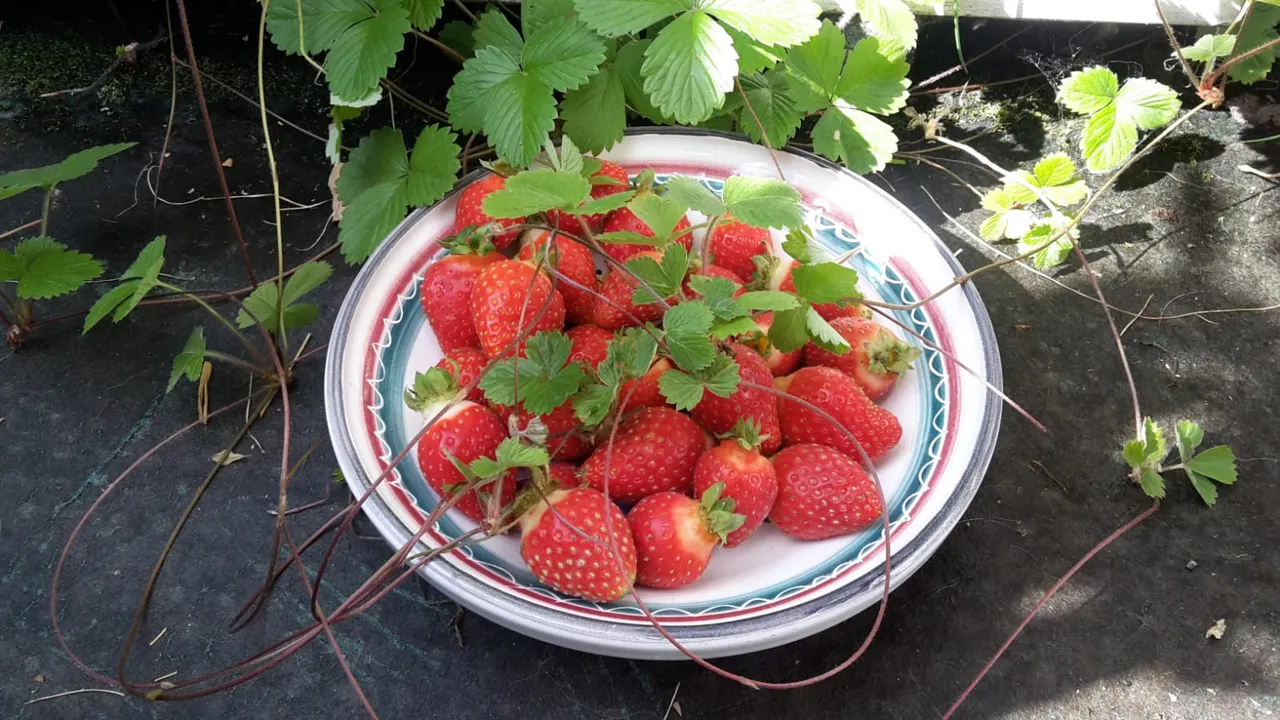
It is generally said that strawberry plants have the greatest yield in the 2nd year. But I personally can not confirm this, I've had plants that beeing already many years old and still gave me a lot of delicious fruits.
If you like to make more out of your plants, it is very easy to do. So you do not have to buy new plants.
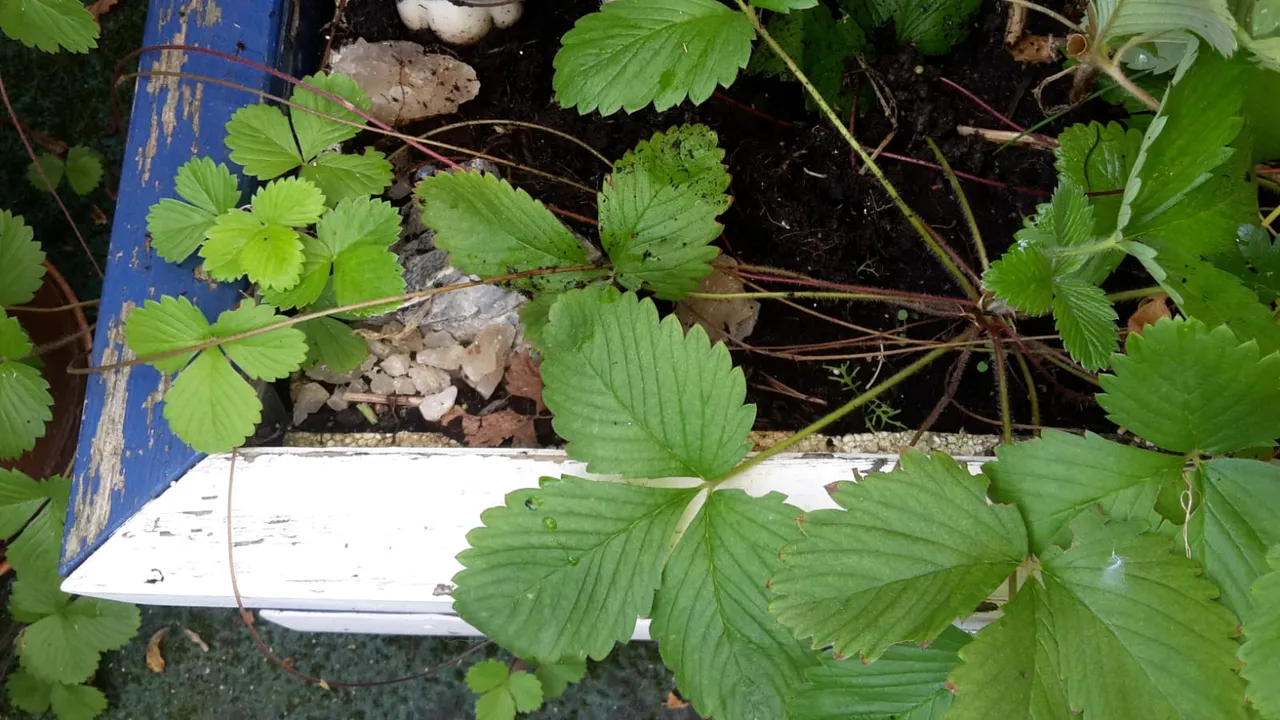
After harvesting the ripe fruits, the plants form so-called offshoots all by themselves. So, if you want to grow new plants, you should let at least one plant grow these shoots. It should be noted that this plant puts its energy into the new offshoots and does not produce any fruit during this time.
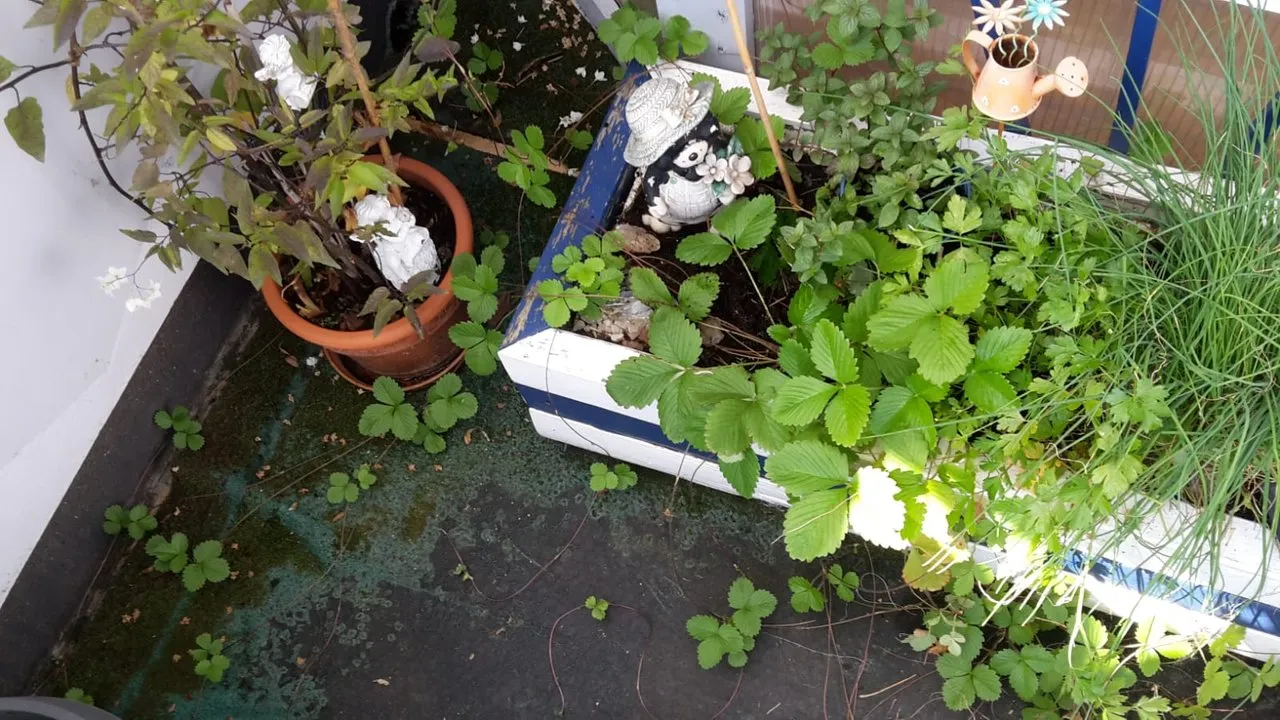
For a good second harvest in one year it is recommended to let the offshoots grow only on a few plants.
Along the offshoots, small strawberry plants will gradually form, which are initially still supplied by the mother plant.
A variant would be to put a small pot with earth under where these plantlets grow and to weigh down the plant lightly with a stone. Then it roots in these pots and when it is strong you only need to cut the "umbilical cord".


But, that would not be me, if I would not do things different ;-)
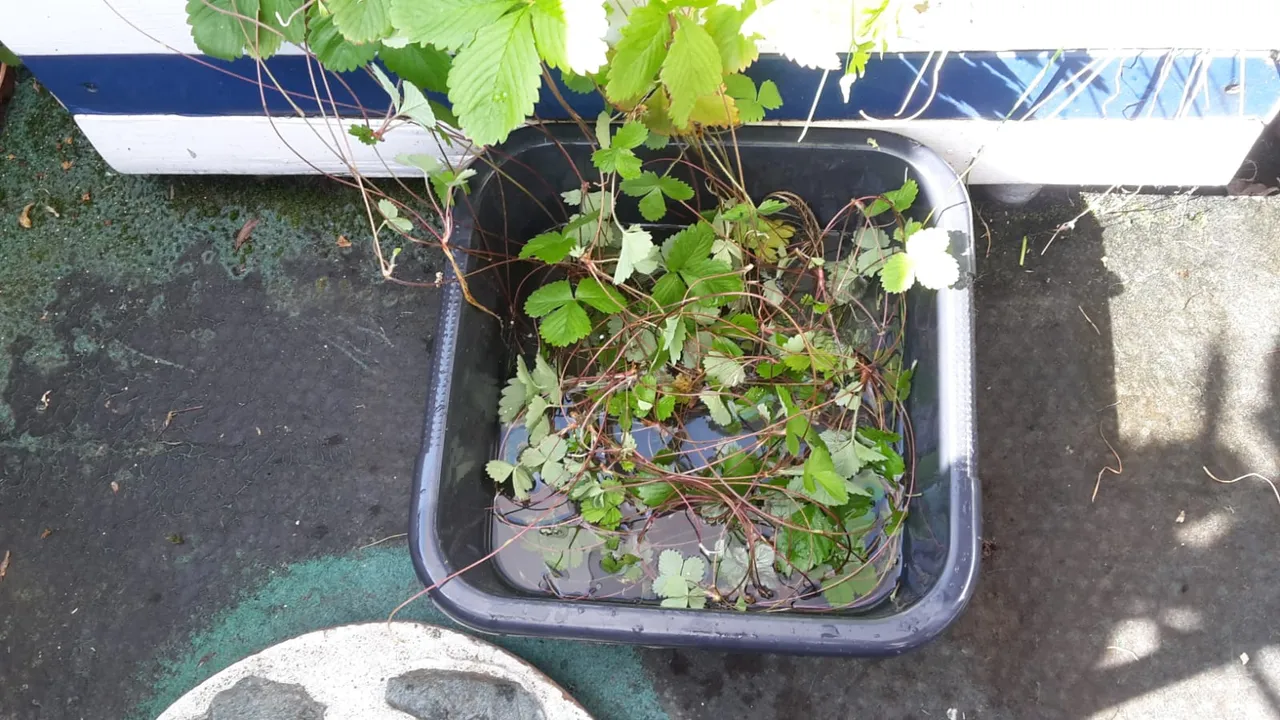
So I let the offshoots grow however they want. Then I gather them together and put them in a container with water, where they - still connected with their mother - take root in a a few days.
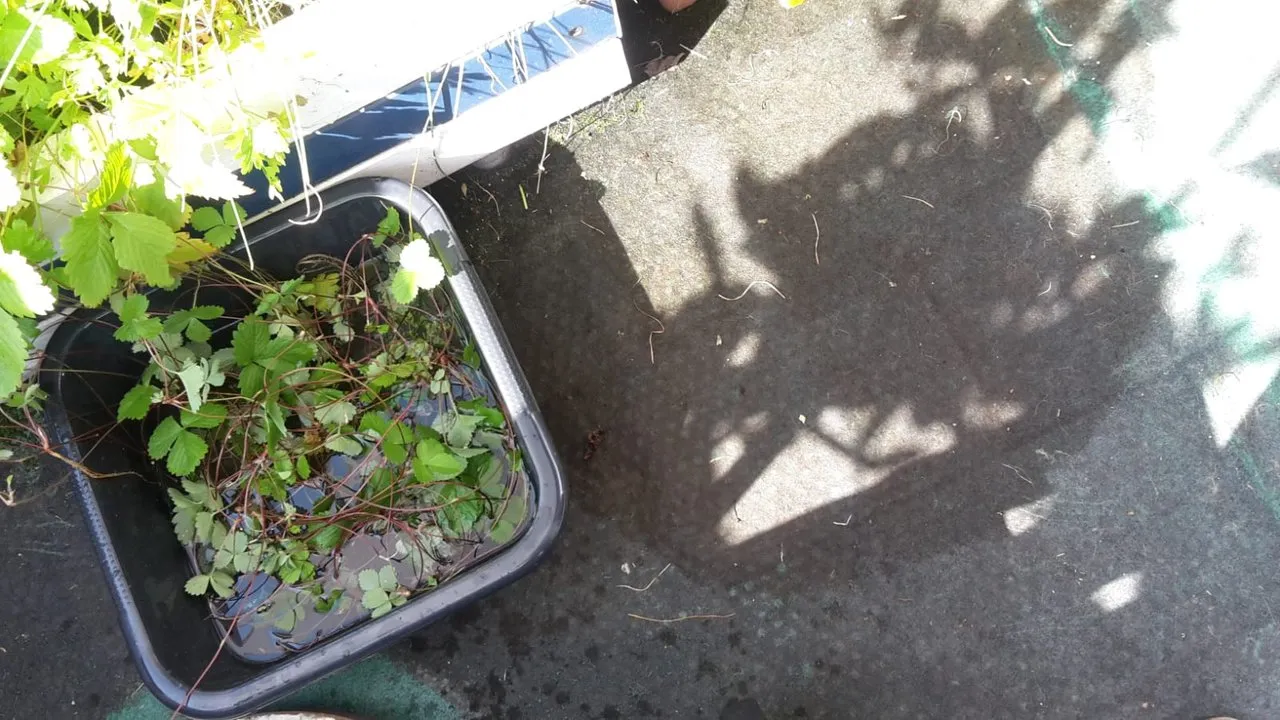
Doing this, I was findig the Minnie Mouse Shadow for the Shadow Hunter Contest there, smiling and watching me.
Here you see the new roots, growing towards the water:
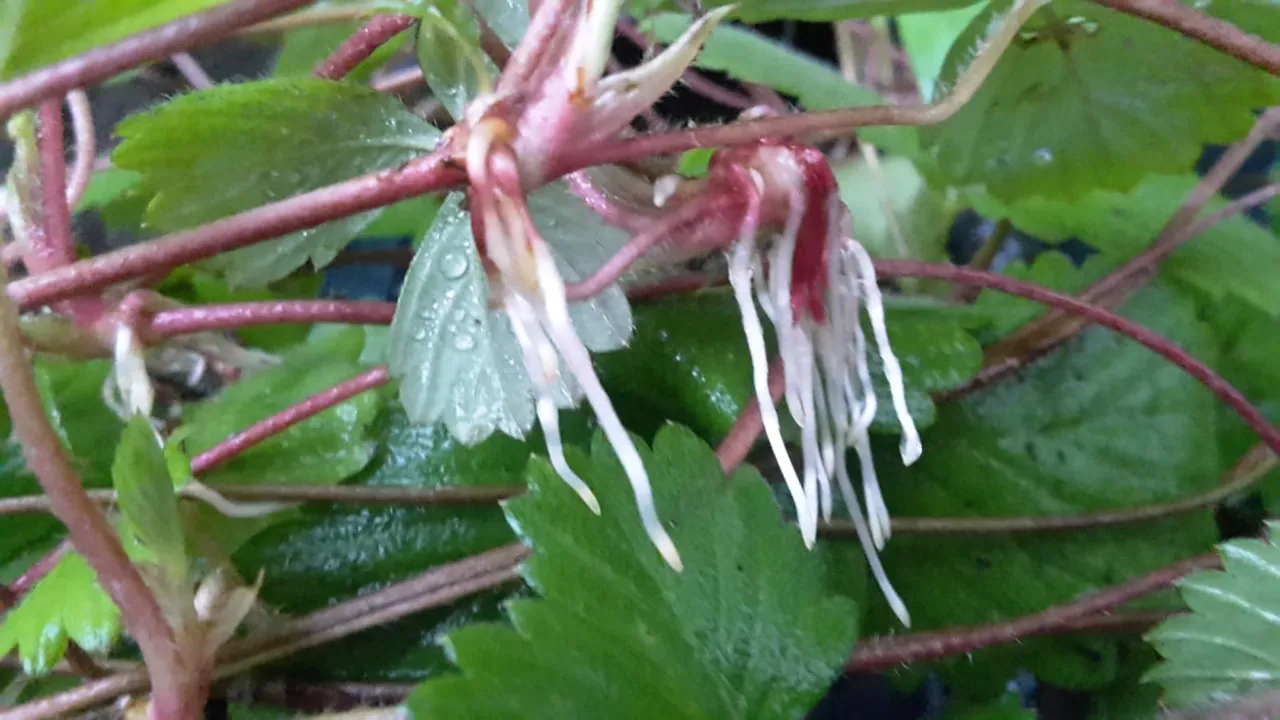
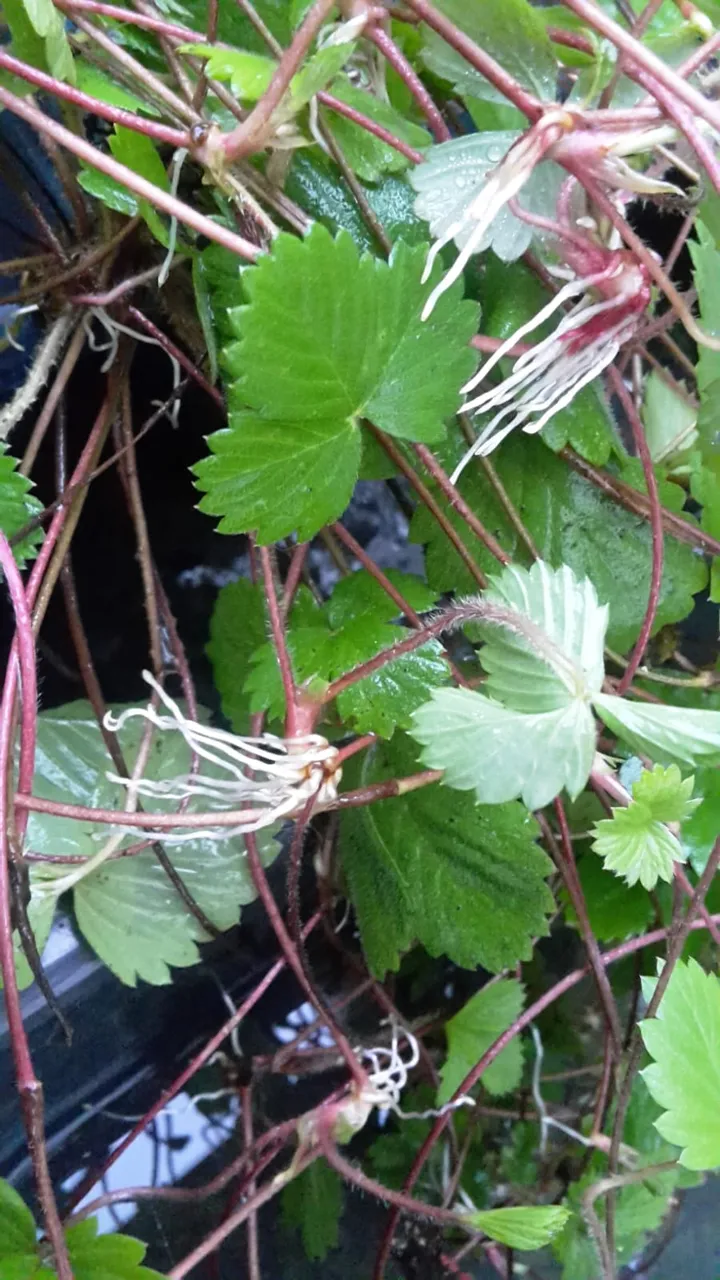
When the plants have got strong roots, I disconnect them from the mother plant and plant the plantlets one by one.
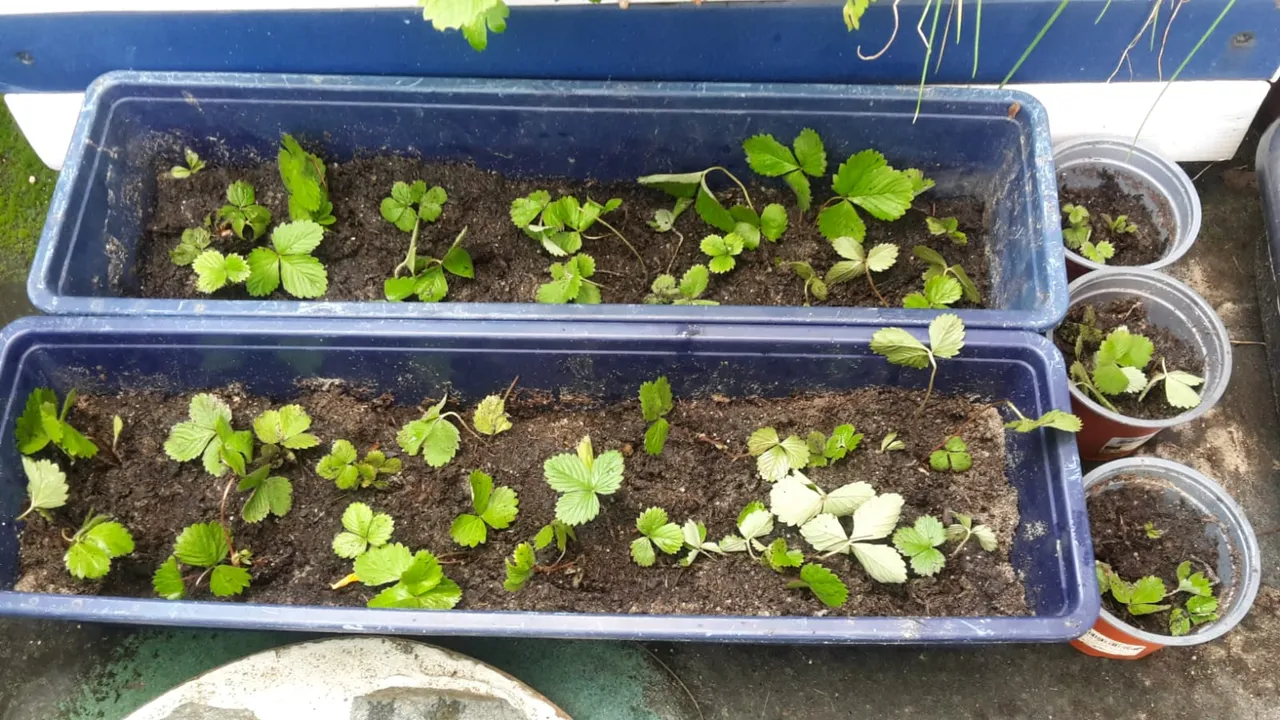
This works very well. The only important thing is to always keep the soil moist the first time. Not too wet, but never too dry.
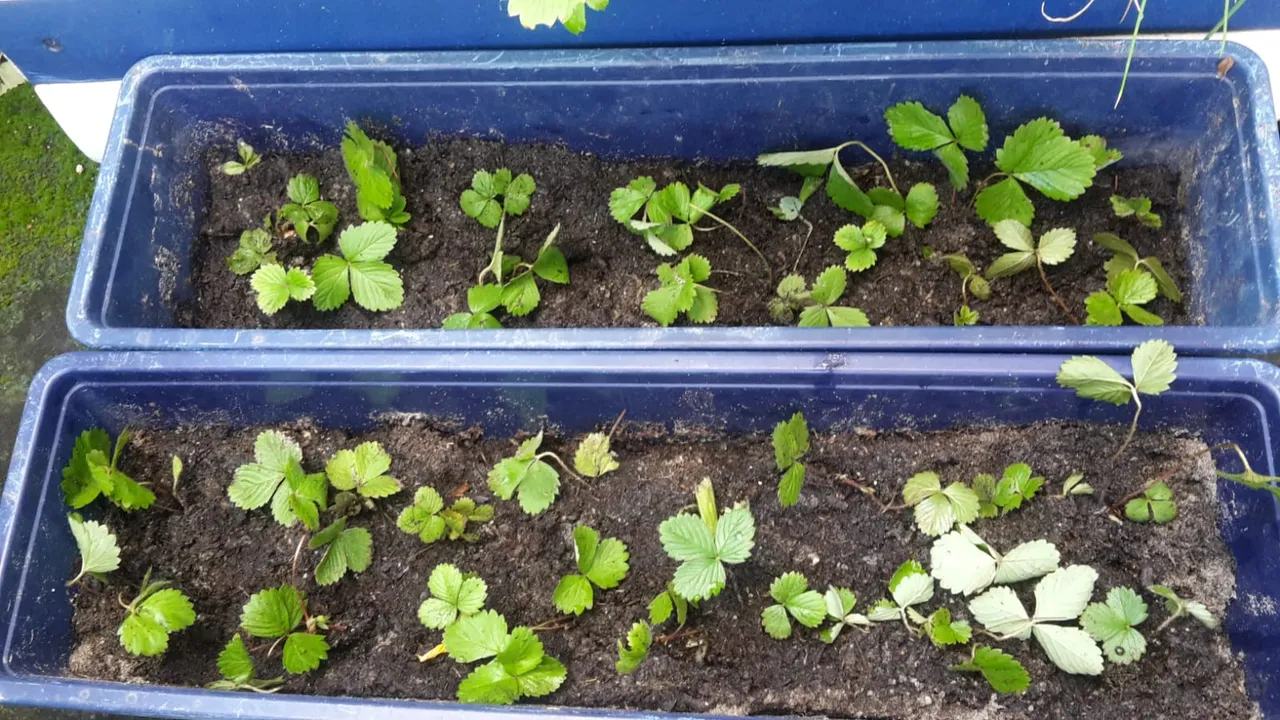
I have distributed many plants in two boxes and each 3 in a little pot, which will be very nice little gifts until spring :-)
The rest, many smaller or weaker I met all together in a large flower pot, let's see if they also grow:
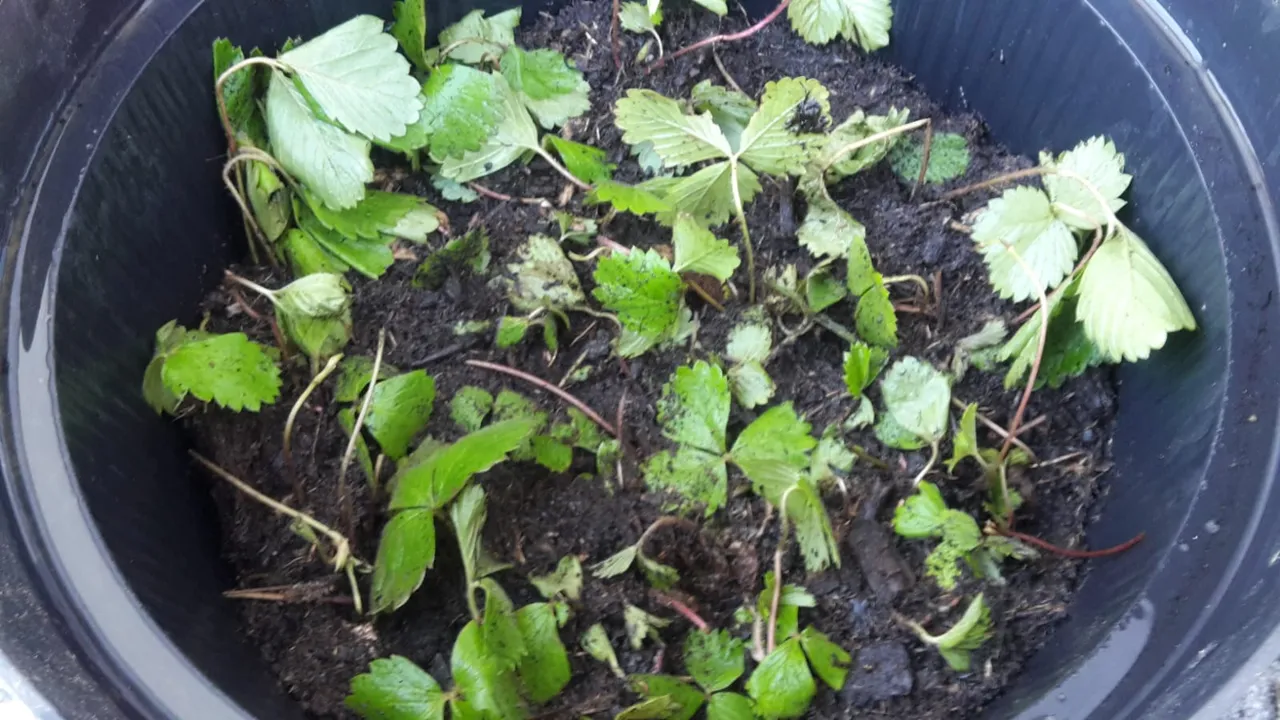
Last I had found this little baby, which makes a good impression because it already has root and a small new shoot. I put it in a tiny pot with the intention to document the growth her on HIVE.
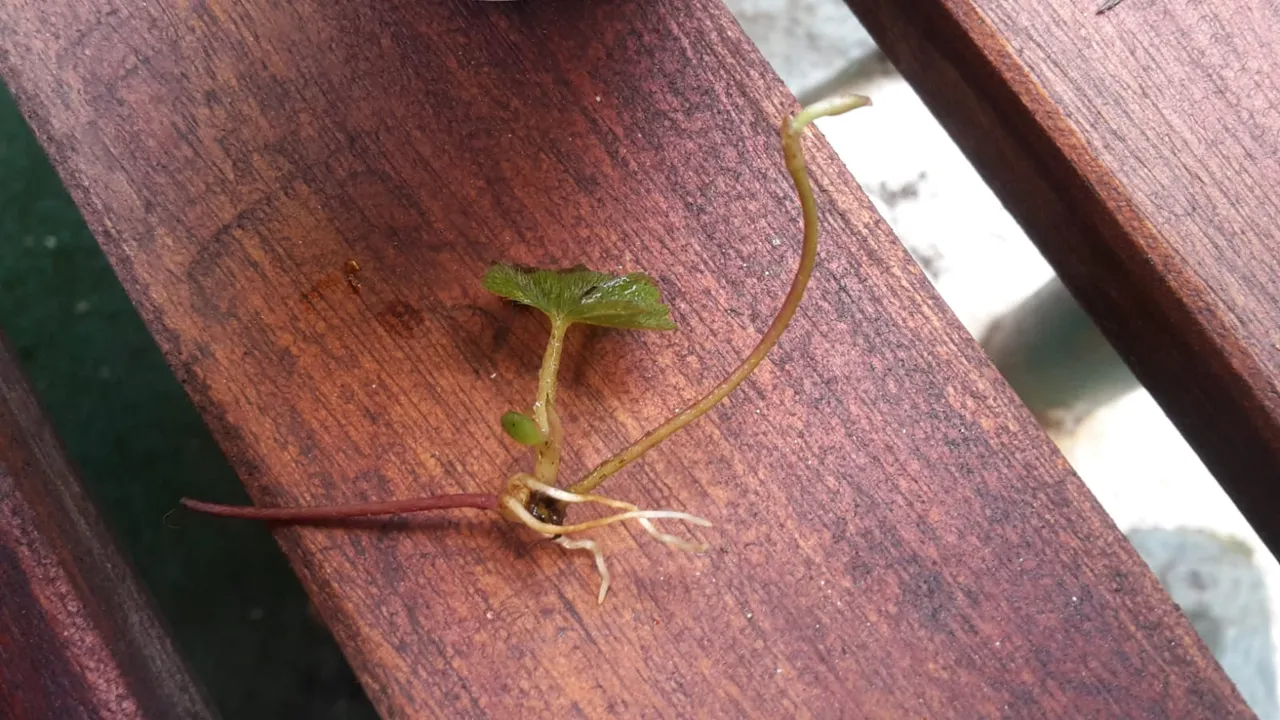
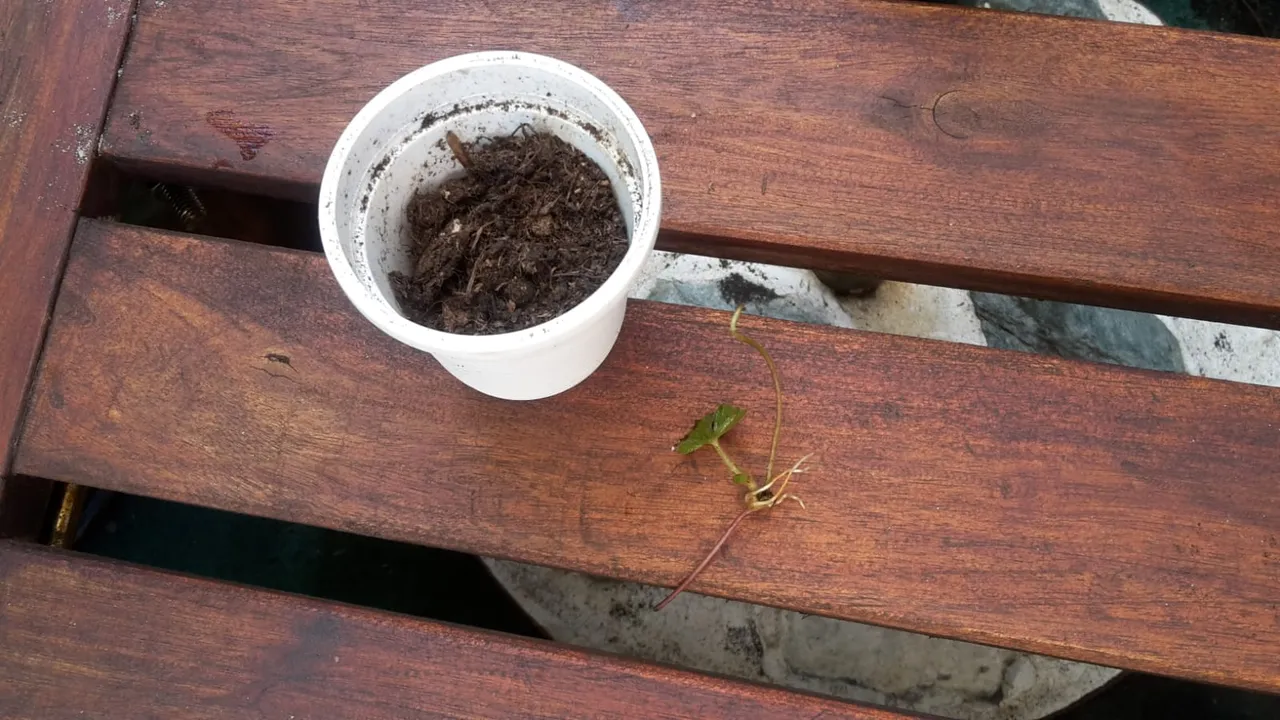
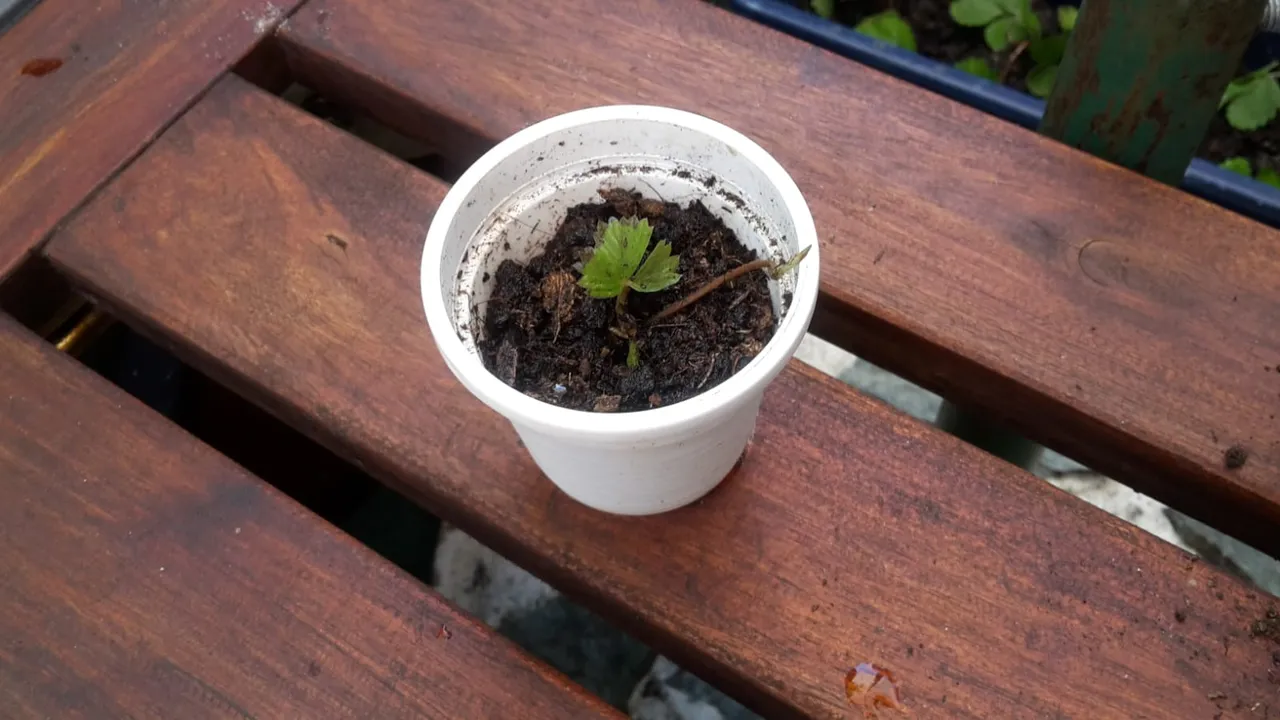
And yes, I must admit, the strawberries on the first photo were bought ;-) we never have such a harvest here in the beginning autumn. But they look really good on the photo, don't they?
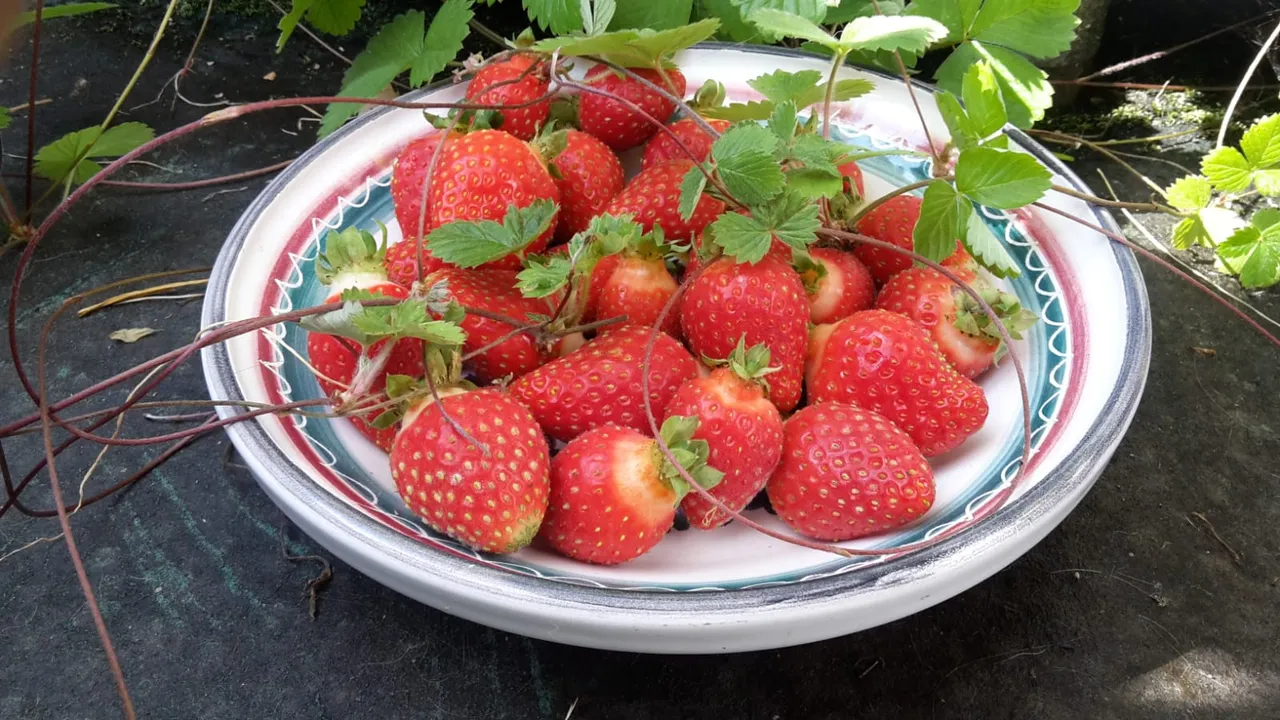
The strawberry plant I have propagated is a very small super tasty wild berry variety. I had this in Bavaria in the garden and took 3 plants with me when I moved. Now look how many have become :-)
For strawberries, which grow in the garden, it is recommended to surround them with straw, the fruit will not rot so easily. As seen here with our garden strawberries:
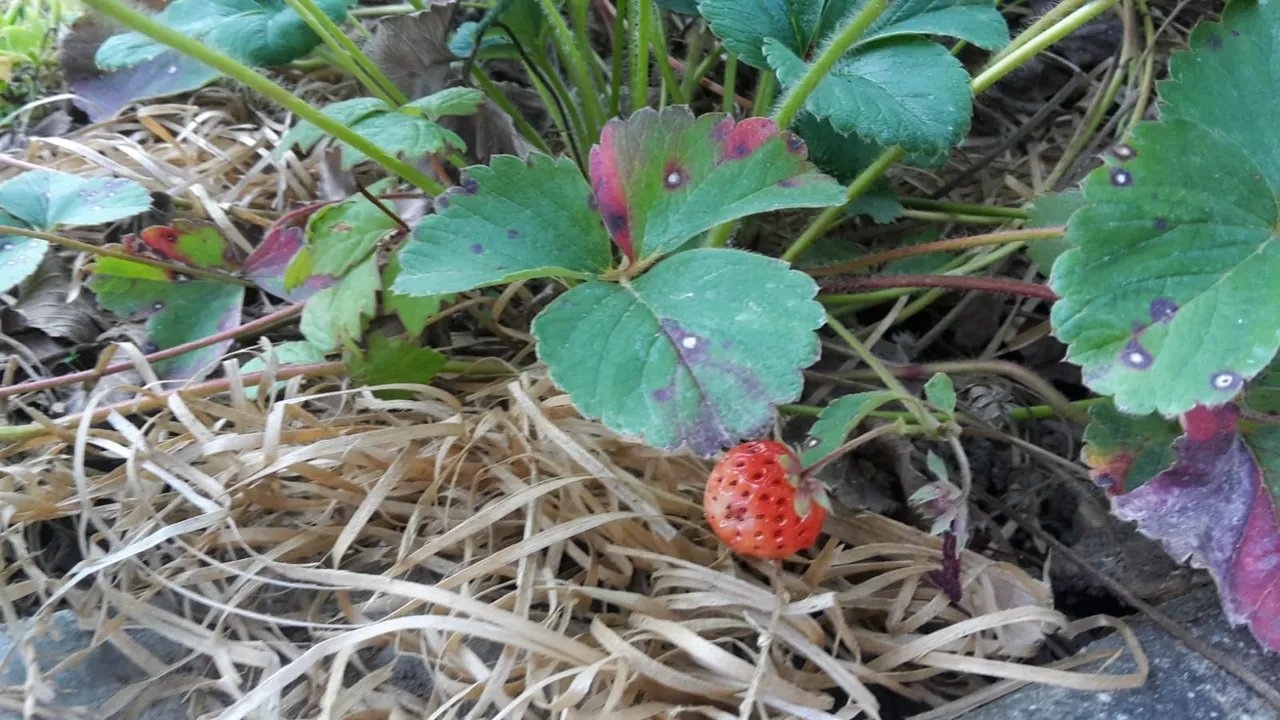
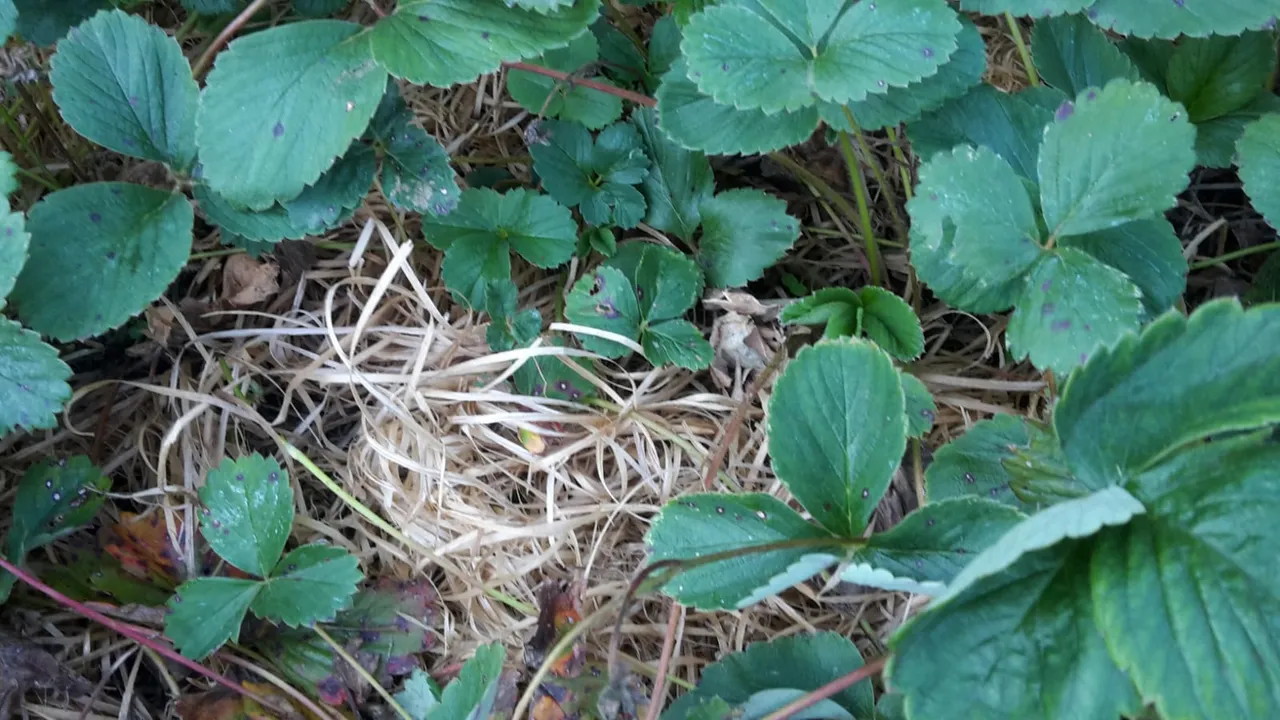
--- DEUTSCH ---
Wer mag keine Erdbeeren? Ich denke fast jeder mag diese leckeren Sommer Früchte. Es sind auch sehr genügsame Pflanzen, die man einfach auf Balkon oder am Fenster im Töpfen kultivieren kann.
Im allgemeinen sagt man, dass Erdbeerpflanzen im 2. Jahr den größten Ertrag haben. Ich persönlich kann das aber nicht bestätigen, ich hatte Pflanzen, die schon viele Jahre alt waren und mir immer noch leckere Früchte schenkten.
Wenn man gerne mehr aus seinen Pflanzen machen will, so geht das sehr einfach. Man muss also nicht immer neue Pflanzen kaufen.
Nach der Ernte der reifen Früchte bilden die Pflanzen nämlich ganz von selbst sogenannte Ableger aus. Wenn man also neue Pflanzen züchten will, so sollte man bei mindestens einer Pflanze diese Triebe wachsen lassen. Wobei zu beachten ist, dass diese Erdbeerpflanze dann ihre Energie in die neuen Ableger steckt und während dieser Zeit keine Früchte produzieren wird.
Für guten Ertrag empfiehlt es sich also nur bei wenigen Pflanzen die Ableger wachsen lassen. Entlang der Ableger bilden sich dann nach und nach kleine Erdbeerpflänzchen, die zuerst noch durch die Mutterpflanze versorgt werden.
Eine Variante wäre es, dort wo diese Pflänzchen wachsen, ein kleines Töpfchen Erde unter zu stellen und die Pflanze leicht mit einem Stein zu beschweren. Dann wurzelt sie in diesen Töpfchen und wenn sie stark ist braucht man nur noch die "Nabelschnur" durchtrennen.
Aber, das wäre nicht ich, würde ich es nicht anders als üblich machen ;-) Ich lasse also die Ableger wachsen wie sie wollen. Dann sammle ich sie zusammen und gebe sie in ein Gefäß mit Wasser, wo sie in kurzer Zeit Wurzeln schlagen. Dann trenne ich die Verbindung zur Mutterpflanze und setze die Pflänzchen einzeln ein. Das funktioniert sehr gut. Wichtig ist nur, die erste Zeit immer die Erde feucht zu halten.
Ich habe viele Pflanzen in zwei Kisten verteilt. Jeweils 3 in ein Töpfchen, das werden bis zum Frühling sehr nette kleine Geschenke :-) Den Rest, viele kleinere oder schwächere habe ich dann einfach noch in einen großen Blumentopf, mal sehen ob die auch anwachsen.
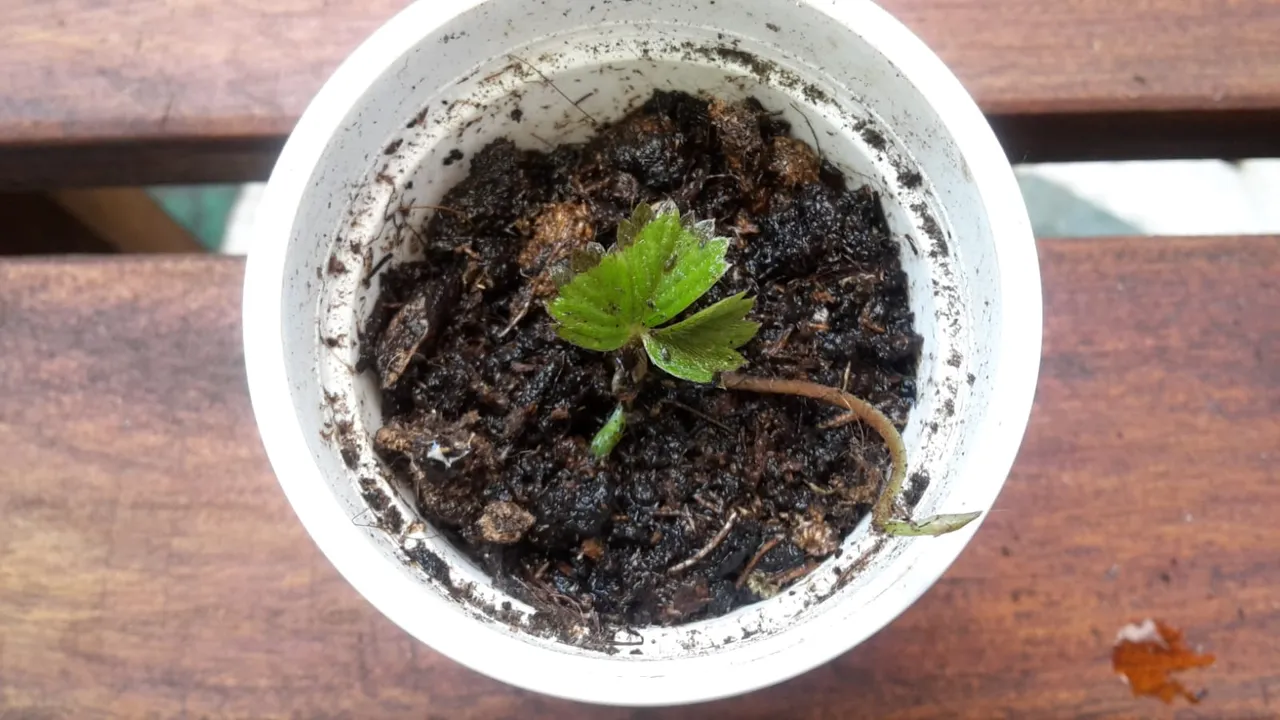
Zuletzt hatte ich noch dieses kleine Baby gefunden, das einen guten Eindruck macht weil es schon Wurzel und einen kleinen neuen Trieb hat. Das habe ich in ein winziges Töpfchen gesetzt mit der Absicht das Wachsen zu dokumentieren.
Und ja, ich muss zugeben, die Erdbeeren auf dem ersten Foto waren gekauft ;-) so eine Ernte haben wir hier im herbst nicvt mehr. Aber sie machen sich echt gut auf dem foto oder?

Die Erdbeerpflanze die ich vermehrt habe ist eine sehr kleine super leckere Waldbeeren Sorte. Ich hatte diese in Bayern im Garten und davon 3 Pflanzen beim Umzug mitgenommen. Nun seht, wieviele daraus geworden sind :-)
Ich hoffe der Beitrag hat euch gefallen und ihr wisst nun, wie leicht man Erdbeeren vermehren kann.
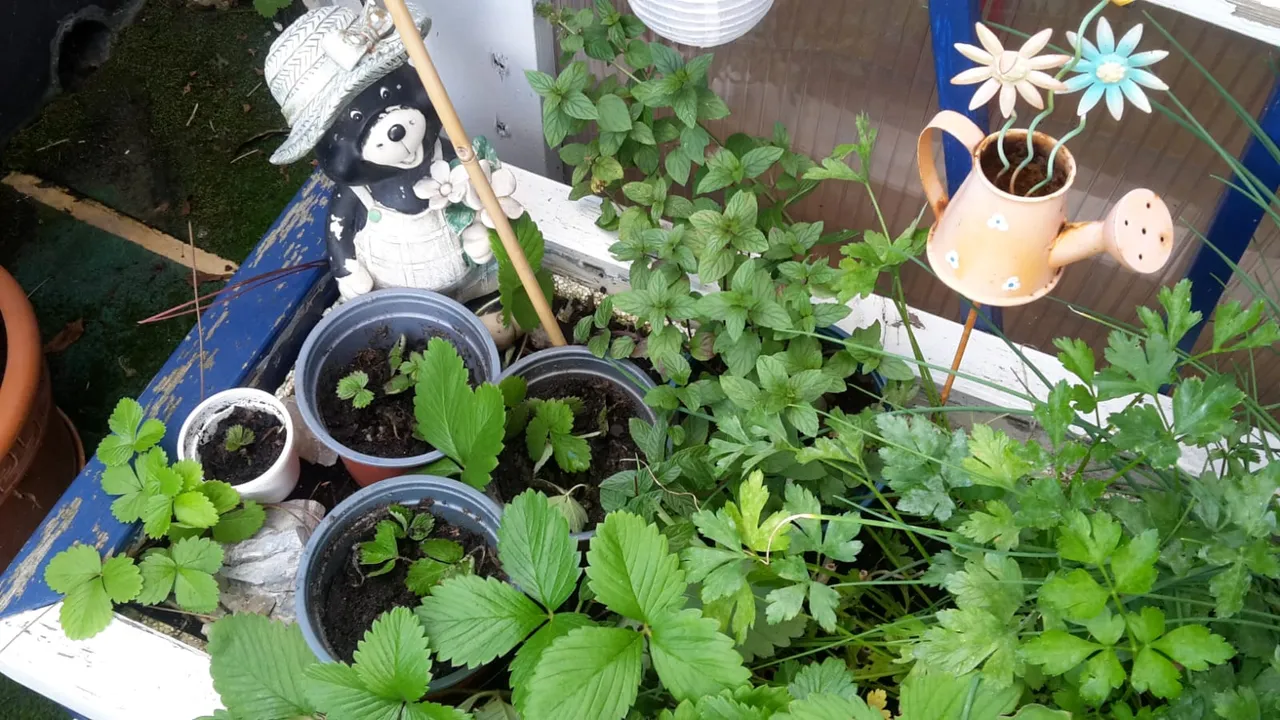
I hope you enjoyed the post and now know how easy it is to become more and more out of your strawberries. As promised, I mention @galenkp who also planted his own strawberries this year.
Translated with www.DeepL.com/Translator (free version)
